12 Ancient African Civilizations
Mieko Matsumoto; Cynthia Smith; and Charlotte Miller
ANCIENT EGYPT
RECENT DISCOVERY — Egyptian Beer
That the ancient Egyptians honored their dead and believed in an eternal afterlife is incontrovertible. The great pyramids and practice of mummification are testament to the elaborate belief systems and rituals Egyptians developed to commemorate death. However, prior to the advent of pyramid building and mummification, the Egyptians honored their dead in a much simpler way, by raising a glass. In 2018 researchers discovered the worldʻs oldest industrial brewery in North Abydos, Egypt, using magnetic survey technology. The 5,000 year old brewery has been dated to around 3,150 BCE and was capable of churning out 5,900 gallons of beer at a time. Archaeological evidence suggests that the beer was used for rituals with “thousands of pottery ʻbeer jarsʻ found in and around some of the funerary temples” (Gershon 2021, NP). Beer was also associated with a variety of gods and goddesses and used for rituals.
So we know that the ancient Egyptians could mass produce beer, but what did it taste like? A food historian and a brewery took on a project with the British Museum to try to recreate ancient Egyptian brews. They found that ancient Egyptian brewing methods were efficient (fermentation was faster than with modern brewing) and produced a tasty light beer. Beer was drunk from ceramic vessels with straws. In addition to being used in rituals, beer was consumed daily. The laborers who built the pyramid of Giza were given a daily beer ration that was the equivalent of 10 pints!
In addition to the discovery of the ancient brewery, archaeologists and Egyptologists continue to make new inroads in understanding the ancient Egyptian views on life and death. The recent archaeological discovery of a vast mummification workshop in Saqqara has shed further light on the business of mummification. And mummification was big business. Egyptologists and archaeologists found that the workshop was divided into areas dedicated to the different steps of the mummification process. The families of the deceased could choose various burial options for their loved one based on their budget. The wealthy were buried in elaborate sarcophagi with masks made of precious metals and inlaid with jewels. Their preserved organs were encased in alabaster canopic jars. Budget burials usually featured wooden coffins, linen shrouds, clay canopic jars, and plaster masks. After burial in the tombs next to the workshop, priests were paid to take care of the tombs and ensure peaceful and happy afterlives for the deceased.
These recent discoveries in Abydos and Saqqara are only two examples of new archaeological finds that have furthered our understanding of the ancient Egyptian world. Furthermore, these new sites and the research being conducted make evident that history is a living subject. Analyses of the past change and there are always new things to learn. And that is something we can all raise a glass to.
In our study of World History, ancient Egypt serves as an excellent example of a complex society with cross-cultural connections, demonstrated adaptation to and control over changing environments, and sophisticated political and religious developments. Egyptian leaders unified Upper and Lower Egypt around 3,100 BCE, creating a powerful ancient state. Developments in the millennia preceding unification, including the sharing of innovations and responses to environmental change, set the stage for the emergence of Egyptian civilization.
The Nile River flows south to north, fed by two main river systems: the White Nile and the Blue Nile. The White Nile flows steadily throughout the year and has its origins in the Great Lakes Region of East Africa. The Blue Nile originates in the Ethiopian highlands and brings floodwaters up past the first cataract in the summers. The floodplain of the Nile River is narrow, leading, especially with the desiccation of the surrounding areas, to high population densities close to the river. During the era of ancient Egypt, the Nile had regular floods whose upper limit was predictable, enabling the Egyptians to avoid the damage from floods that Mesopotamians experienced. The annual flooding of the Nile, called inundation, followed a predictable pattern – melting snow in the mountains that fed this river led water levels to rise slowly over a period of months, reaching a peak in September. This annual inundation spread water across the land as the Nile watered a vast floodplain extending miles on both sides of the river. The inundation of water in fields lasted for weeks, then the river receded back to its banks by November. This slow, lengthy rise of the river left behind well-irrigated soil and deposited a fertilizing layer of sediment, nutrient-rich mud and silt. While salt deposits and declining crop yields were described in Mesopotamian records as early as 2,400 BCE, Egyptians planted and harvested bountiful yields for thousands of years without soil salinization or degradation, due to the Nile’s annual replenishing of the soil. Modern Egyptians no longer enjoy these benefits due to the building of several dams to better ‘control’ water and generate energy. Now the silt brought down builds up behind dams and Egyptians face the age-old curse of depleted soil.

The Nile flowed northward and trade winds blew southward, making it possible to move up and down with simple sailboats for travel and trade – transforming this river into a veritable highway that connected, rather than divided, the civilization. Upper and Lower Egypt lie north of the first cataract, usually allowing river traffic to proceed uninterrupted throughout the territory. In addition, the Nile was calm, gentle and had accessible sloping banks which enhanced the Egyptians’ ability to use the river for transportation. Egyptian views of the Nile recognized the river’s centrality to life, as demonstrated in the “Hymn to the Nile,” dated to approximately 2100 BCE. The praise-filled ode to the Nile River begins, “Hail to thee, O Nile! Who manifests thyself over this land, and comes to give life to Egypt” (“Hymn to the Nile” n.d.). The course of the Nile River definitely impacted settlement patterns, while the river also allowed for trade and the development of larger agricultural communities.
In addition to facilitating trade and agriculture, the Nile River was a significant source of papyrus. Ancient Egyptians used the papyrus plant for a variety of goods including: paper, clothing, string, boats, and even as food. Papyrus flourished in the swamp lands along the Nile River and was used by Egyptians as a valuable trade export. The importance of the papyrus plant to the Egyptians is reflected in myths and artwork. Additionally, “the close relationship that developed between people and plant also had significant effects on art and architecture. The form of the plant lent itself as a model for design, so the papyrus motif was commonly incorporated into amulets, mirror handles and other objects. It also seems to have been an inspiration for the design of free-standing columns” (Gaudet 1998).
Today, papyrus can still be seen along the banks of the Nile River, however, efforts to drain the swamps and build canals have diminished their abundance. The removal of papyrus can have negative consequences as it has been found that “…they help to prevent soil erosion during heavy rains, and they take up pollutants flowing in rivers and streams, making water more suitable for irrigation or drinking” (Gaudet 1998).
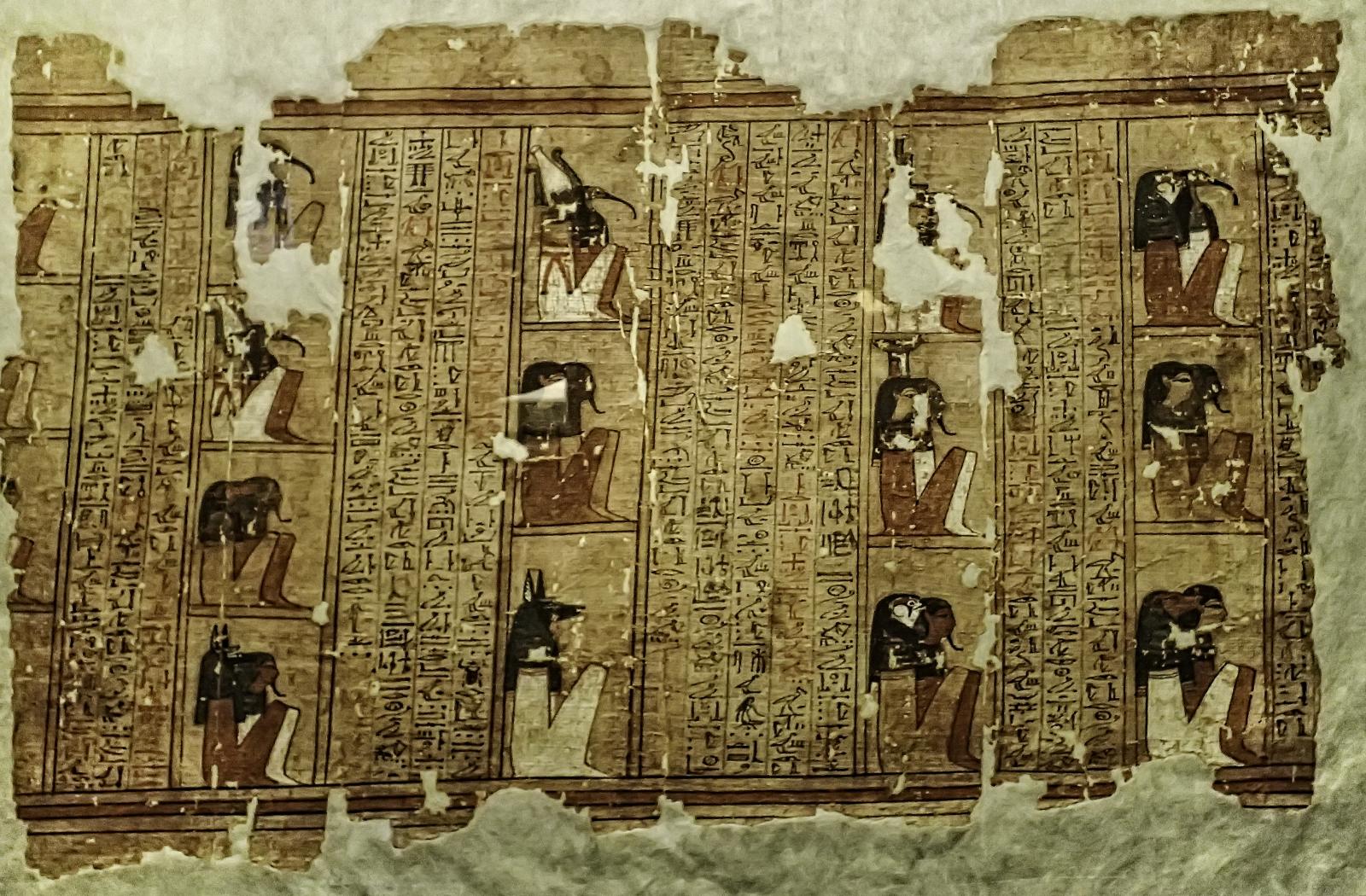
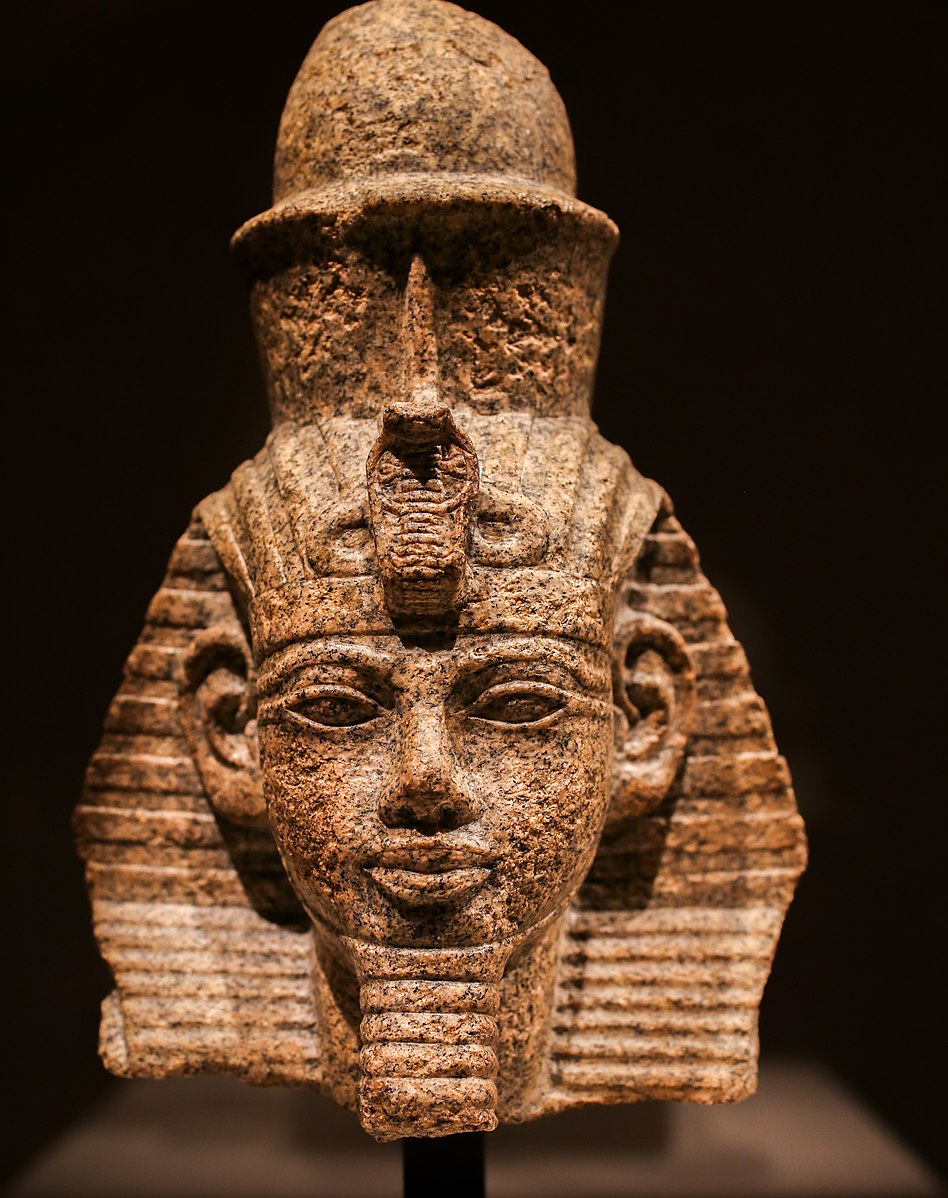
Egyptian settlements along the Nile are evident by about 3,600 BCE. By about 3,500 BCE, Egyptians had quadrupled the amount of cleared, arable land and could support population densities of up to one thousand people per square mile. Recent archeological finds at Hierakonpolis also show evidence of both social differentiation and specialization, with separate burials for the settlement’s elite, the oldest known painted tomb, and the remnants of a large-scale brewery, capable of producing up to 300 gallons of beer a day. It is believed that early leaders in Naganda, Hierakonpolis, and similar communities cemented their roles by claiming control over the environment as rainmakers or commanders of the floods. Over time, some of these leaders created divine kingships, asserting their right to even more power and access to resources, power that they legitimized by claiming special relationships with, or even descent from, gods. Once Egypt was unified, pharaohs ruled as divine kings, as the personification of the gods. They promised order in the universe. When things went well, the pharaohs were credited with agricultural productivity and the success of the state. There was no separation between religion and the state in ancient Egypt.
Like Mesopotamians, Egyptians believed forces of nature – the river, the winds and rains – were a manifestation of their deities. The benevolent behavior of nature was seen as evidence of caring deities. Egyptians viewed their gods as loving and protective, evidenced by the many gifts from the natural world around them. Although they faced hardships, and some deities did represent negative forces, the dominant emphases in ancient Egyptian religion were demonstrations of gratitude and reverence towards deities viewed as benevolent. As long as love and care of the gods continued, the Nile would continue its annual inundation, replenishing the land, and Egyptians would continue to enjoy productive agriculture, good fortune and prosperity. Maintaining this benevolent relationship was the responsibility of a powerful priesthood. As in Mesopotamia, Egyptian priests wielded tremendous influence as an elite class. And this powerful priesthood answered to the leader they believed to be a god manifest in human form – pharaoh.
Reading the Past – Hymn to the Nile c. 2100 BCE
Read: “Hymn to the Nile, c. 2100 BCE“, Oliver J. Thatcher, ed., The Library of Original Sources (Milwaukee: University Research Extension Co., 1907), Vol. I: The Ancient World, pp. 79-83.
King Narmer, referred to in some texts as Menes, is commonly recognized as the first unifier of Upper (to the south) and Lower (to the north) Egypt in approximately 3,100 BCE. Unification brought together Egypt from the first cataract at Aswan to the Nile Delta. The Palette of Narmer, which is used to date the unification of Egypt, shows signs that King Narmer legitimized his rule, in part, by claiming a special relationship with the gods. The Palette, which was found in Hierakonpolis, shows King Narmer’s conquest of both regions and depicts Narmer slaying an enemy of Upper Egypt. The largest figure, Narmer is wearing the crown of Upper Egypt and beheading a rival king, while standing atop conquered enemies. The left side also shows him as a conqueror, wearing the crown of Lower Egypt and directing flag bearers to mark his victory. Religious imagery appears with the inclusion of the goddess Hathor at the top of the palette as well as the falcon, a reference to Horus, the patron god of Hierakonpolis, who later in dynastic Egypt became the god of sun and kingship.

Both sides of the Palette of Narmer also have some of the earliest known hieroglyphs. Hieroglyphics emerged as Egypt’s written text, combining pictograms (a pictorial symbol for a word or phrase) and phonograms (a symbol representing a sound), during the period of unification. Tax assessment and collection likely necessitated the initial development of hieroglyphics. Ancient Egyptians eventually used three different scripts: Hieroglyphic, Hieratic, and Demotic. Hieroglyphics remained the script of choice for ritual texts.The Egyptian administration tended to use ink and papyrus to maintain its official records. On the other hand, literate people used ostraca, pieces of broken pottery and chips of limestone, for less formal notes and communications. Over the past decades, archaeologists have uncovered a treasure trove of ostraca that have begun to tell us about the lives of the literate elite and skilled craftsmen. Like Mesopotamia, ancient Egypt had one of the oldest written scripts found anywhere in the world.
Learning in Action – Hieroglyphs and Writing Systems of Ancient Egypt
Watch the video: “Ancient Egypt: Hieroglyphs and Writing Systems”, National Museums Liverpool 2000
In addition to creating one of the earliest writing systems and Egyptian paper (papyrus), archeologists have credited ancient Egyptians with a number of other innovations. For construction purposes, ancient Egyptians invented the ramp and lever. They also developed a 12-month calendar with 365 days, glass-making skills, arithmetic (including one of the earliest decimal systems) and geometry, and medical procedures to heal broken bones and relieve fevers. Egyptians used stone-carving techniques and other crafting skills and tools that were shared throughout the Mediterranean.
DYNASTIC EGYPT
Scholars break the 1,500 years following unification, a time known as dynastic Egypt, into three main periods: the Old Kingdom (c. 2,660–2,160 BCE), the Middle Kingdom (c. 2040–1640 BCE), and the New Kingdom (c. 1,530–1,070 BCE). There is some disagreement about the exact dates of these periods but these spans denote eras when there was more centralized control over a unified Egypt. During dynastic Egypt, pharaohs ruled a united Upper and Lower Egypt. In between these periods of centralized control were the intermediate periods, during which the Egyptian pharaohs had less authority. The intermediate periods were characterized by political upheaval and military violence, the latter often at least partially resulting from foreign invasions. Striking continuities existed in Egypt throughout the Old Kingdom, the Middle Kingdom, and the New Kingdom. Egypt had stable population numbers, consistent social stratification, rule by pharaohs – who exercised significant power – and a unifying religious ideology which linked the pharaohs to the gods. As Egypt transitioned from the period of unification under King Narmer to the Old Kingdom, the pharaohs and the elite became increasingly wealthy and powerful. They further developed systems of tax collection, expanded the religious doctrine, and built a huge state bureaucracy.
Social distinctions and hierarchies remained fairly consistent throughout all of dynastic Egypt. Most people were rural peasant farmers. They lived in small mud huts just above the flood plain and turned over surplus agricultural produce to the state as taxes. When they weren’t farming, they were expected to perform rotating service for the state, by, for example, working on a pharaoh’s tomb, reinforcing dykes, and helping in the construction of temples. The labor of the majority of the population supported the more elite and skilled classes, from the pharaoh down through the governing bureaucrats, priests, nobles, soldiers, and skilled craftspeople, especially those who worked on pyramids and tombs.
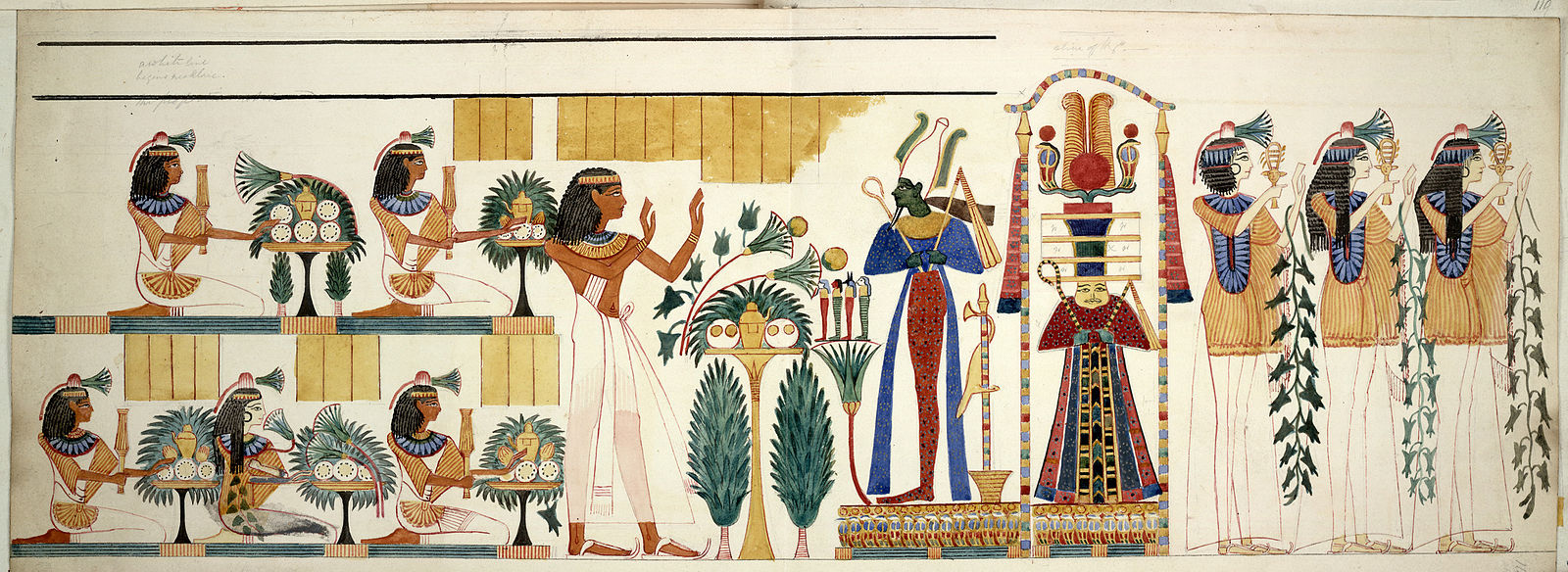
Another continuity in dynastic Egypt was the relative equality of women to men. Compared to women in other ancient societies, women in ancient Egypt had considerable legal rights and freedoms. Men and women did generally have different roles; Egyptian society charged men with providing for the family and women with managing the home and children. Society’s ascribed gender roles meant that women were usually defined primarily by their husbands and children, while men were defined by their occupations. This difference could leave women more economically vulnerable than men. For example, in the village of craftspeople who worked on the pharaoh’s tomb at Deir el Medina, houses were allocated to the men who were actively employed. This system of assigning housing meant that women whose husbands had died would be kicked out of their homes as replacement workers were brought in. Despite some vulnerabilities, however, Egyptian law was pretty equal between the sexes when it came to many other issues. Egyptian women could own property, and tax records show that they did. Egyptian women could also take cases to court, enter into legally binding agreements, and serve actively as priestesses.
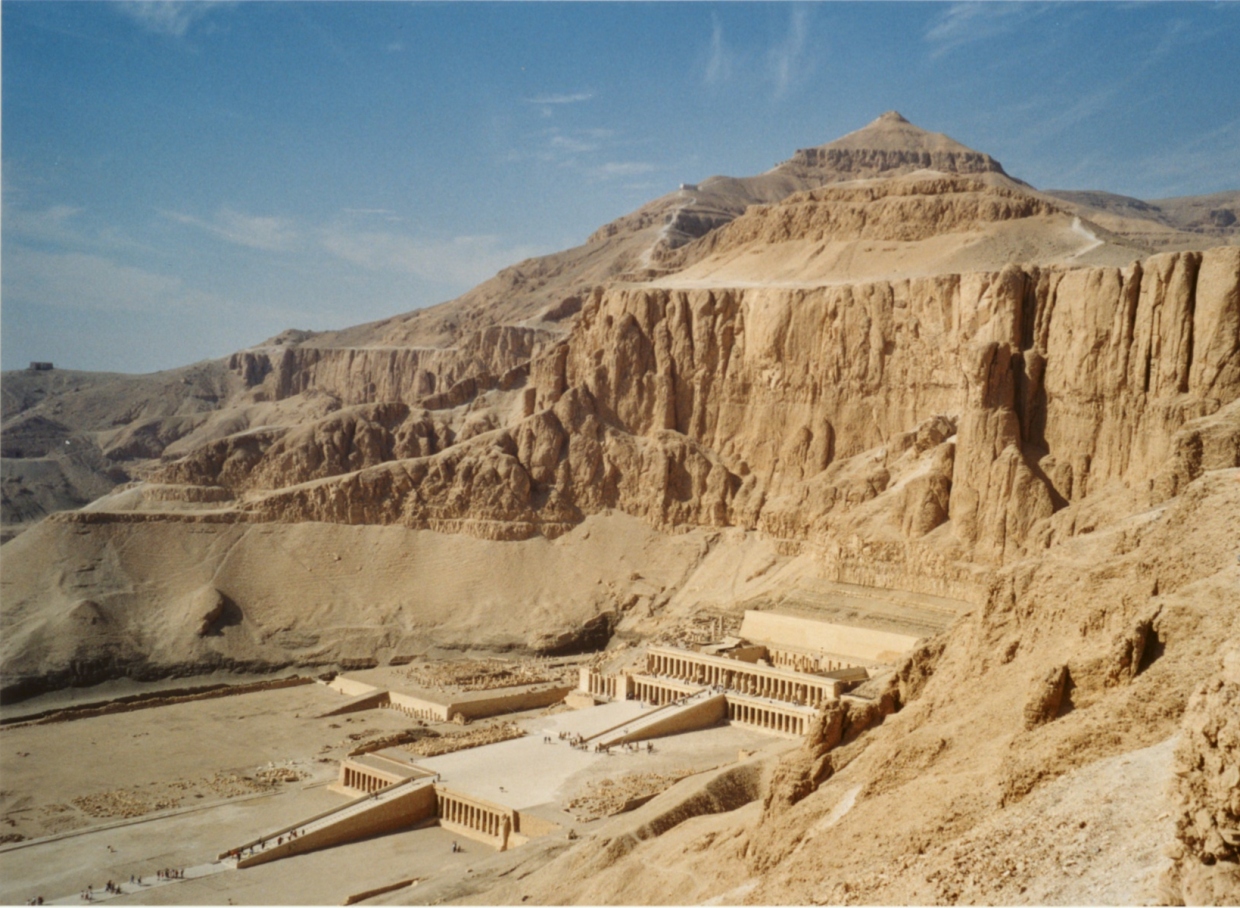
Equally fascinating is the historical evidence of female pharaohs, women who held theocratic power in one of the most powerful states of the ancient world. The first recognized female pharaoh was Sobeknefru, the Crocodile Queen, who lived circa 1,830-1,785 BCE. The most famous woman pharaoh was Hatshepsut, 6th pharaoh of the 18th Dynasty who ruled circa 1,479-1,458 BCE. Despite the fact that a successor pharaoh apparently destroyed some public works constructed during her reign for reasons still being debated, it is clear that her reign was a time of prosperity and extensive public works construction including roadways and a massive memorial temple, Deir el-Bahri.
One last, perhaps surprising, legal entitlement of ancient Egyptian women was their right to one-third of the property that a couple accumulated over the course of their marriage. Married women had some financial independence, which gave them options to dispose of their own property or to divorce. Therefore, while women did face constraints in terms of their expected roles and had their status tied to the men in their families, they nevertheless enjoyed economic freedoms and legal rights not commonly seen in the ancient world.
Learning in Action – Hieroglyphics and Women in Ancient Egypt
Watch the video: “What Hieroglyphics Say About the Women of Ancient Egypt”, The Smithsonian Channel 2018
Link: https://www.si.edu/object/what-hieroglyphics-say-about-women-ancient-egypt:yt_QmJzKXIto3c
For more information on women in ancient Egypt, see also: World History Encyclopedia: Women in Ancient Egypt
While scholars working over the past several decades have used artwork, archeology, and the surviving legal documents to draw conclusions about women’s roles in ancient Egypt, there is much ongoing debate about the prevalence of slavery within this society. Part of the disagreement stems from how various scholars define slavery. There is also great uncertainty about the number of slaves within the Egyptian population. The majority of the slaves in later dynasties were either prisoners of war or slaves brought from Asia. Slaves performed many tasks. For example, they labored in agricultural fields, served in the army, worked in construction, helped their merchant owners in shops, and were domestic servants for the Egyptian elite. Slaves were branded and, if possible, would be captured and returned to their masters if they tried to escape. Some masters undoubtedly abused their slaves, though the image of thousands of slaves sacrificed to be buried with pharaohs incorrectly depicts dynastic Egypt. Manumission (freeing a slave) was seemingly not very common, but if they were freed, former slaves were not stigmatized; instead, they were considered part of the general free population. New scholarly conclusions about the relatively small numbers of slaves in Egypt, especially during the Old Kingdom, have impacted our understanding of how pyramids, tombs, and temples were constructed during dynastic Egypt. When discussing worker tombs found near the pyramids of Giza, renowned archaeologist Zahi Hawass noted “These tombs were built beside the king’s pyramid, which indicates that these people were not by any means slaves” (Reuters 2010). There is also evidence that farmers in the region provided fresh meat, in the place of paying regular taxes, to feed the estimated 10,000 laborers.
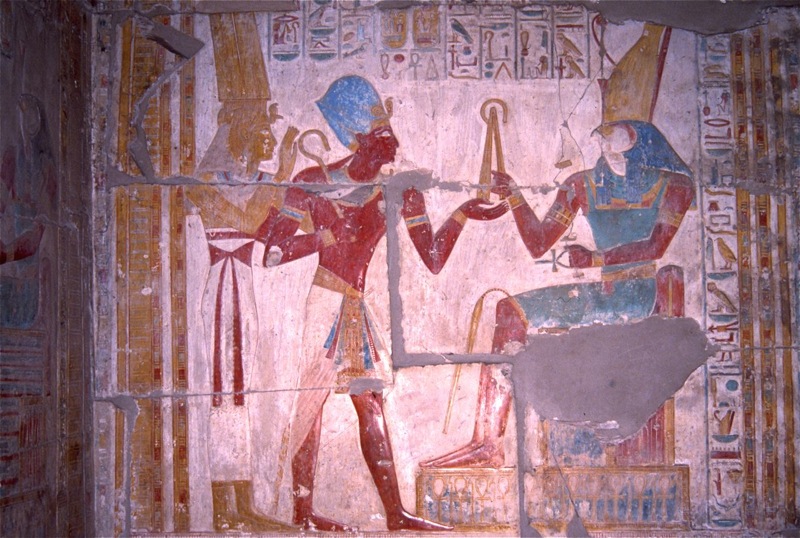
Egyptians were polytheistic. Some of the roles and back-stories of the deities did change over time, nevertheless, over the millennia they remained quite consistent. For example, Re, Osiris, Horus, and Isis, a few of the deities in the Egyptian pantheon, stayed significant throughout dynastic Egypt. Re was the sun god, Osiris was the god of the after-world who also controlled nature’s cycles like the all important flooding of the Nile, Horus became a god of war and protection, and Isis was a goddess associated with healing and motherhood. During the Middle Kingdom, Amun, initially a patron saint of the city of Thebes and later recognized as the father of the pharaoh, was combined with Re, the sun god, to become Amun-Re the supreme god of the Egyptian pantheon. Amun-Re retained this place at the top of the Egyptian pantheon through most of the New Kingdom. One major exception occurred during the reign of Pharaoh Akhenaten during the New Kingdom period.
The Old Kingdom (c. 2660-2160 BCE)
The Old Kingdom saw pharaohs harness their influence to build pyramids to emphasize their relationship to the divine and facilitate their ascent to the gods after their earthly deaths. Pyramids were the tombs for pharaohs and their families. They were marvels of engineering, built on a massive scale to honor the pharaohs and usher them into the afterlife. Pharaohs were mummified to preserve their bodies and were buried with everything considered necessary for the afterlife, including furniture, jewelry, makeup, pottery, food, wine, clothing, and sometimes even pets. The most recognizable pyramids from the Old Kingdom are the three pyramids at the Giza complex, which were built for a father (Egyptian pharaoh Khufu), and his son and grandson, who all ruled during the 4th dynasty.

The Great Pyramid of Giza, built for Pharaoh Khufu, is the largest of the three pyramids. It was the tallest human made structure on the planet for millennia, until the construction of Lincoln Cathedral in the early 14th century C.E. The base of the Khufu pyramid occupies over 13 acres and rises to a height of 481 feet, containing over 2 million stones – some estimated as weighing as much as 70 tons. Recent studies on the construction of the pyramids have put much more emphasis on the roles of skilled craftsmen who might work at multiple pyramid sites over the course of their lifetimes, and rotating groups of unskilled workers, rather than on slaves as the key labor force. These studies suggest that skilled craftsmen and local labor forces of Egyptians were the primary builders of the pyramids, including the Great Pyramid of Giza. The Great Pyramid of Giza took an estimated 20 years to construct and employed skilled stonemasons, architects, artists, and craftsmen, in addition to the thousands of unskilled laborers who did the heavy moving and lifting. The construction of the Great Pyramid of Giza was an enormous, expensive feat. The pyramid stands as testimony to the increased social differentiation, the great power and wealth of the Egyptian pharaohs, and the significance of beliefs in the afterlife during the Old Kingdom.
In addition to the construction of pyramids, the Old Kingdom saw increased trade and remained a relatively peaceful period. The pharaoh’s government controlled trade, with Egypt exporting grain and gold (the latter from Nubia to the south) and importing timber, spices, ivory, and other luxury goods. During the Old Kingdom, Egypt did not have a standing army and faced few foreign military threats. Lasting almost 400 years, the Old Kingdom saw the extension of the pharaoh’s power, especially through the government’s ability to harness labor and control trade. However, the power of the pharaohs began to wane in the 5th dynasty of the Old Kingdom. Continuing environmental change that led to droughts and famine, coupled with the huge expense of building pyramids, likely impoverished pharaohs in the last centuries of the Old Kingdom. Additionally, the governors known as nomes, who administered Egypt’s 42 provinces from the 5th dynasty onward, became more independent and took over functions that had been overseen by the state. As an added blow, the pharaohs lost control of trade. While dynastic leaders still referred to themselves as pharaohs, they lacked central authority over a unified Egypt by 2,180 BCE, leading to the First Intermediate Period.
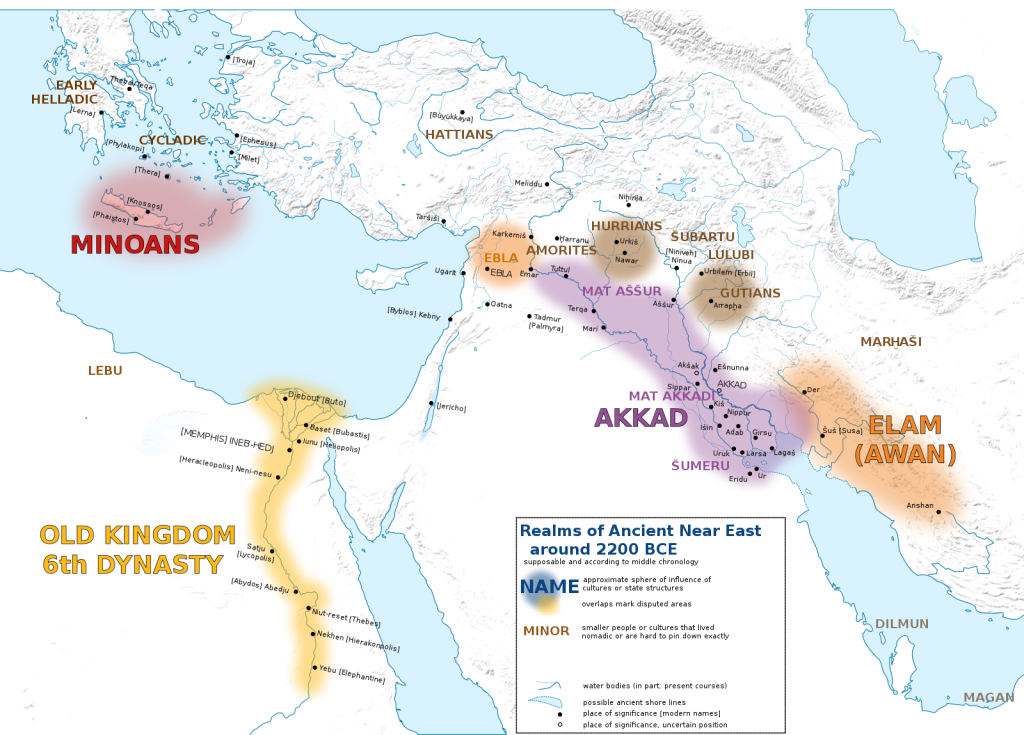
The Middle Kingdom (c. 2040-1640 BCE)
Following the decentralized First Intermediate Period of roughly 150 years, Pharaoh Mentohotep II reunified Egypt to found the Middle Kingdom. The Middle Kingdom saw the reorganization of the state’s bureaucratic apparatus to control the nomes. To further strengthen their authority, the pharaohs also moved their capital from the Old Kingdom capital of Thebes south to Lisht, halfway between Upper and Lower Egypt. With military expeditions, they extended the boundaries of the state north to Lebanon and south to the second cataract of the Nile, into a region known as Nubia. With this extension of territory, Egypt had access to more trade goods, and the organization of trade shifted so that professional merchants took a leading role in developing new trade routes. These professional merchants paid taxes to the state, supporting further consolidation of power by the pharaohs as well as infrastructural improvements like irrigation. During the Middle Kingdom, the pharaohs focused less on the building of massive pyramids and more on administrative reorganization, military expeditions, and the state’s infrastructural repair. Disputes over succession and ineffectual rulers led into the Second Intermediate Period. Most notably, Egypt was invaded from both the north and the south during this period. The Hyksos invaded from the north in 1670 BCE. They brought bronze and horse-drawn chariots, which allowed them to conquer parts of Lower Egypt and establish their own kingdom, one lasting about 100 years in the Nile Delta region. From the south, the Kingdom of Kush, based in Nubia, invaded and temporarily established control over Upper Egypt to Aswan. Thus, foreign rulers dominated much of Egypt during the Second Intermediate Period.
Learning in Action – Egypt’s Climate Crisis
Watch the video: “These Trees Uncover What Plunged Egypt’s Climate Into Chaos”, The Smithsonian Channel 2017
Link: https://www.si.edu/object/these-trees-uncover-what-plunged-egyptaposs-climate-chaos:yt_5ZQ3FNyfMTs
The New Kingdom (c. 1530-1070 BCE)
The turbulence of the Second Intermediate Period did not last long. The New Kingdom of a reunified Egypt that began in 1,530 BCE saw an era of Egyptian imperialism, changes in the burial practices of pharaohs, and the emergence of a brief period of state-sponsored monotheism under the Pharaoh Akhenaten. In 1,530 BCE, the pharaoh who became known as Ahmose the Liberator (Ahmose I) defeated the Hyksos and continued sweeping up along the Eastern Mediterranean. By 1,500 BCE, the Egyptian army had also pushed into Nubia, taking Kush southward to the fourth cataract of the Nile River. As pharaohs following Ahmose I continued Egypt’s expansion, the Imperial Egyptian army ran successful campaigns in Palestine and Syria along the Eastern Mediterranean. Furthermore, by expanding into Kush, Egypt controlled trade routes into Sub-Saharan Africa. Adopting the Hyksos’ chariot military and metal technologies contributed to the Egyptian ability to strengthen its military. Egypt maintained a large standing army and built an expansive empire during the New Kingdom.
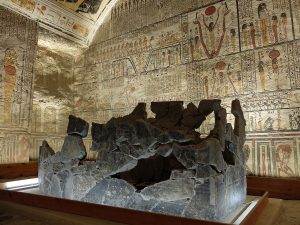
Egypt saw many other developments during the New Kingdom, especially when it came to burial practices and religion. During the New Kingdom, pharaohs and Egyptian elites used the Valley of Kings, located across the Nile River from Thebes, as their preferred burial site. They desired tombs that were hidden away and safe from tomb robbers. Therefore, instead of pyramids, they favored huge stone tombs built into the mountains of the Valley of the Kings. Nearly all of the tombs in the Valley of Kings were raided, so the fears of the pharaohs were well founded. Tomb raiding was even common during dynastic Egypt. King Tutankhamen’s tomb has become one familiar exception. His tomb fared unusually well over the millennia, and King Tutankhamen’s image is well known to us because his tomb was found mostly intact in 1922.
Throughout dynastic Egypt, much continuity existed in religious beliefs, causing scholars to characterize Egyptian society as conservative, meaning that Egyptians shied away from change. In general, Egyptian religious beliefs emphasized unity and harmony. Throughout the dynastic period, Egyptians thought that the soul contained distinct parts. They believed that one part, the ka, was a person’s life force and that it separated from the body after death. The ba, another part of the soul, was the unique character of the individual, which could move between the worlds of the living and the dead. They believed that after death, if rituals were carried out correctly, their ka and ba would reunite to reanimate their akh, or spirit. If they observed the proper rituals and successfully passed through Final Judgment, where they recited the 42 “Negative Confessions” and the god Osiris weighed their hearts against a feather, Egyptians believed that their resurrected spirit, their akh, would enter the afterlife.
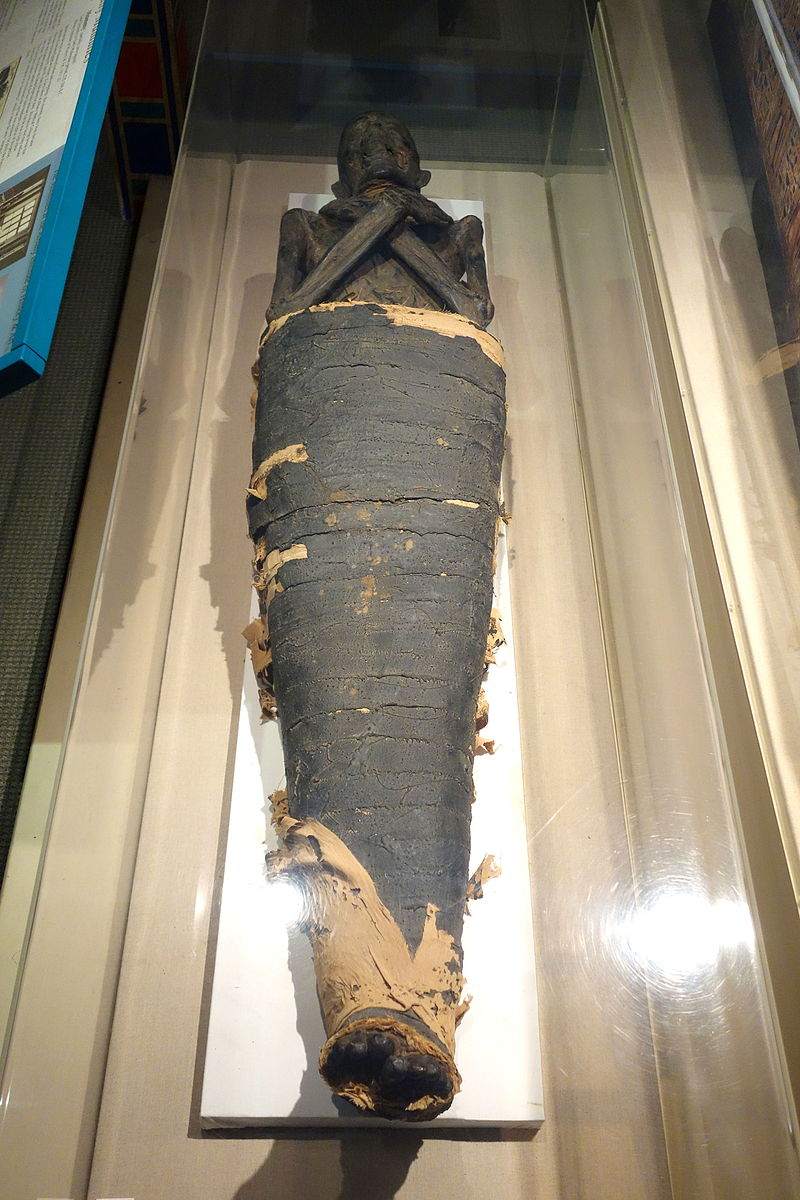
Those who could afford to do so, spent great sums on elaborate mummification processes that were meant to ensure life after death. Purposeful mummification began around 2600 BCE and continued through the 4th century CE. Much of what we know about the process of mummification comes from the writings of Greek historian, Herodotus. Equally as important as mummification was the provisioning of the deceased in preparation for their eternal life. In contrast to Mesopotamian society, Egyptians conceptualized the afterlife as pleasant. In the afterlife, they expected to find a place with blue skies, agreeable weather, and familiar objects and people. They also expected to complete many of the everyday tasks, such as farming, and enjoy many of the same recognizable pastimes. Throughout the centuries, the Egyptians conceptualized the afterlife as a comfortable mirror image of life. Egyptians stopped practicing mummification between the 4th and 7th centuries CE.
One change that occurred over time was the “democratization of the afterlife.” As time progressed through the Middle Kingdom and into the New Kingdom, more and more people aspired to an afterlife. No longer was an afterlife seen as possible for only the pharaoh and the elite of society. Instead, just about all sectors of society expected access, as evident in the increased use of funeral texts, like the Book of the Dead. People of varying means would slip papyrus with spells or prayers from the Book of the Dead (or a similar text) into coffins and burial chambers. They intended these spells to help their deceased loved ones make it safely through the underworld into the pleasant afterlife.
Reading the Past – Mummification from The Histories by Herodotus
Read: an excerpt from The Histories, Internet History Sourcebook
Link: https://sourcebooks.fordham.edu/ancient/herodotus-mummies.asp
Herodotus (ca 485-425 B.C.E.) was a Greek from Asia Minor (modern-day Turkey) who devoted his life to writing an account of the Greco-Persian Wars (499-479 B.C.E.). While researching, he traveled widely, including to Egypt, and wrote extensively about the cultures he encountered. Egyptians generally did not leave behind written records regarding mummification practices. Indeed, embalming was a competitive and lucrative business. Herodotus provides our only contemporary written account of Egyptian mummification methods.
Pharaoh Akhenaten started what is known as the Amarna Period during the New Kingdom Period. The Amarna Period, which lasted from approximately 1,350 to 1,325 BCE, stands out for its state-sponsored monotheism. Akhenaten introduced radical changes to Egyptian society, moving the capital to Tell el Amarna, a new settlement in the middle of the desert that was devoted to the worship of Aten and the recognition of the pharaoh’s superiority over everyone else. Aten, who had been one of many deities worshipped during the Middle Kingdom, was elevated to the creator god associated with sunlight, the foundation of all life. The “Great Hymn to Aten” explains the god Aten’s association with the sun as, like the sun, his rays enveloped the land of Egypt (Wilson n.d.). Akhenaten had the Great Temple of Aten built in the middle of the new capital, and, unlike previous temples, this one had no roof and was open to sunlight. Akhenaten further modified Egyptian religious doctrine to identify himself as the son of Aten. According to this new religious ideology, Akhenaten alone was able to ensure access to the afterlife and communicate with Aten, the sole god. To reinforce Aten’s singularity, Akhenaten withdrew financial support from temples dedicated to other deities and defaced the temples dedicated to Amun, who had previously been the most dominant Egyptian deity. The prominence of Aten, and Akhenaten’s exclusive access to him, define the Amarna Period.
Why did Akhenaten introduce these radical changes? At least in part, Akhenaten wanted to break with the priests in Thebes who controlled the temples dedicated to Amun because he believed that these priests had become too powerful. Additionally, by taking on the role of the son of Aten and regulating entry into the afterlife, Akhenaten certainly attempted to reformulate beliefs to emphasize his own importance.
Akhenaten’s radical changes were likely troubling for most of the Egyptian population. They previously found comfort in their access to deities and their regular religious rituals. The worship of Aten as the only Egyptian god did not last more than a couple of decades, floundering after the death of Akhenaten. Pharaohs who ruled from 1,323 BCE onward tried not only to erase the religious legacies of the Amarna Period, but to destroy the capital at Tell el Amarna and remove Akhenaten from the historical record. Archaeologists have not found Akhenaten’s tomb or burial place. Scholars continue a long-standing debate about how this brief period of Egyptian monotheism relates (if at all) to the monotheism of the Israelites. Despite such uncertainties, study of the Amarna period does indicate that Egyptians in the 14th century BCE saw the fleeting appearance of a religious ideology that identified Aten as the singular god.
Some of the strongest rulers of the New Kingdom, including Ramses I and Ramses II, came to power after the Amarna Period. These pharaohs expanded Egypt’s centralized administration and its control over foreign territories. However, by the 12th century BCE, weaker rulers, foreign invasions, and the loss of territory in Nubia and Palestine indicated the imminent collapse of the New Kingdom. In the Late Period that followed (c. 1,040 to 332 BCE), the Kingdom of Kush, based in Nubia, invaded and briefly ruled Egypt until the Assyrians conquered Thebes, establishing their own rule over Lower Egypt.
Egypt also suffered a series of attacks by a group known in history only as the Sea Peoples. These marauding peoples are one of history’s remaining mysteries as historians still debate where these sea marauders came from or where they went after wreaking havoc on coastal societies throughout the Eastern Mediterranean. As a result of Sea Peoples attacks, the Egyptian empire was fatally weakened. Egyptian state power retreated back to the banks of the Nile and theocratic dominance of the pharaohs was seriously eroded. Egyptian internal revolts and the conquest by Nubia and the Assyrian Empire left Egypt susceptible to invasion by the Persians and eventually the 332 BCE invasion of Alexander the Great.
Egyptians lived under centralized hereditary rule with power held by the pharaoh. Similarly to the Mesopotamian city-states, social stratification developed in Egypt with individuals filling a number of bureaucratic, religious, and artistic roles in society. The innovations of Egyptians, such as their stone-carving techniques, hieroglyphics, the use of papyrus, their knowledge of the length of a solar year, and their construction methods, influenced the ancient world and still inspire awe.
Modern Issues – The Ethics of Display
Ancient Egypt, with its spectacular pyramids, mythology, and mummies, has long fascinated outsiders. The Ancient Romans were intrigued by Egypt and not only collected Egyptian artwork but also created their own Egyptian-inspired art. The display of artwork exported from Egypt also served political purposes in the ancient world. Several Egyptian obelisks were exported from Egypt and erected in Rome to commemorate Augustus’s (formerly Octavian) military triumphs over Egypt.
Over a thousand years later the Italian Renaissance and the reintroduction of Ancient Roman and Greek works reinvigorated European interest in the region and its history. Of particular interest was the work of 5th century BCE Greek historian, Herodotus, who wrote detailed descriptions of his travels in Egypt and described the process of mummification. In the 18th century CE, Enlightenment thinkers used Egypt as both a topic for scholarly works and inspiration for creative pieces.
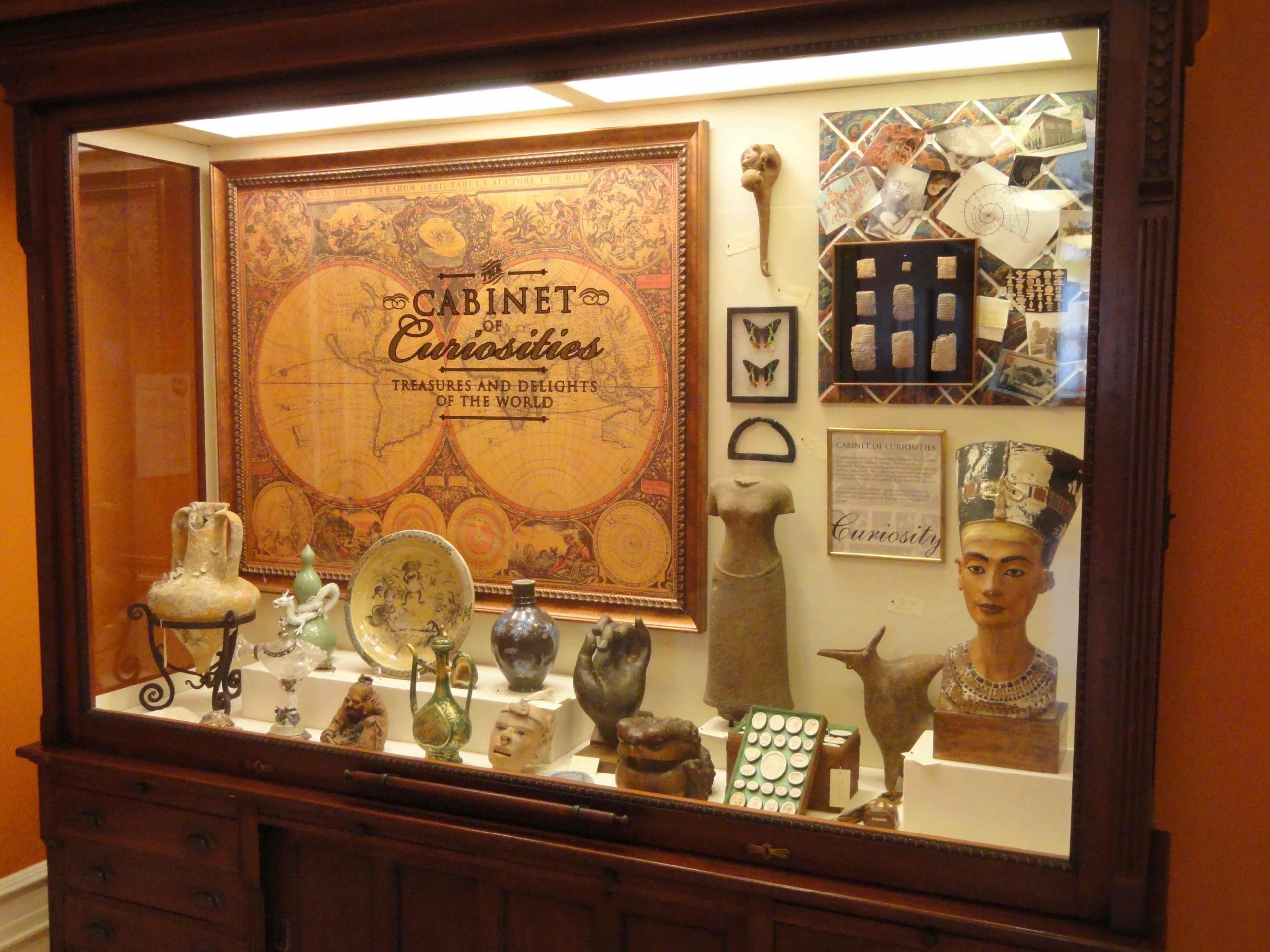
True Egyptomania swept through Western Europe after the 1798 invasion of Egypt by Napoleon. Scientific expeditions, driven by the development of modern science during the Scientific Revolution of the 16th and 17th centuries, descended upon Egypt with enthusiasm and scooped up antiquities for export to Western Europe. Many of these antiquities were initially displayed in private collections referred to as Cabinets of Curiosity or Wunderkammer. These collections featured antiquities that were viewed as rare and exotic. During the 1800s the field of archaeology developed in tandem with the growth of European empire building. As European powers (in particular, the French and British) encroached upon Egypt, foreign excavation increased, which led to unsuccessful efforts by Egyptian authorities to limit the export of Egyptian antiquities.
Of particular interest to collectors were mummies. Mummies were collected for study, consumption (mummy parts have been ingested for medicinal purposes), display, and entertainment. Mummy unwrapping, where a mummy was unwrapped in front of a large audience, was a form of entertainment for elites. Once unwrapped, mummies were occasionally sold to be ground up into a paint called Mummy Brown or to be made into medicine. Due to the haphazard nature of early artifact collection in Egypt, many Egyptian antiquities and mummies were exported out of Egypt with little accompanying information regarding provenance or context. Museums today continue to conduct excavations in Egypt, however, the focus is usually on developing context for the items that are already part of their collections.
Museum exhibits focused on Egypt remain highly popular attractions around the world and a number of noted museums, including the British Museum, feature extensive collections of Egyptian antiquities, excavated artifacts, and mummies. These exhibits often display mummies, sometimes wrapped and sometimes unwrapped, in glass display cases. In recent years this has raised the question of whether or not the display of deceased humans in museums is ethical.
In some contexts, the display of or even possession of human remains is illegal. Egypt was not the only place where colonial powers collected items and bodies for display and study. During the 19th and early 20th centuries, large numbers of Native Americans and Native Hawaiian skeletons were collected and housed in museums and university archives. In fact, during the 20th century there was a rush by professionals and amateurs to collect bones in an effort to study and flesh out new ideas about race and the origins of humankind. These efforts coincided with the forceful extension of European and American colonization around the world. Researchers like Felix Von Luschan, an eminent Austrian anthropologist, recruited members of their nation’s colonizing forces to collect remains. Some of the remains were dug up from gravesites and others were the victims of colonial aggression. Remains were amassed in huge quantities. So-called “bone rooms” were created at museums and filled to the brim as these institutions competed to amass the largest and most diverse collections. Some bones and cultural artifacts were sent to museums with detailed notes regarding provenance. Many others were sent in with little to no information about origin.
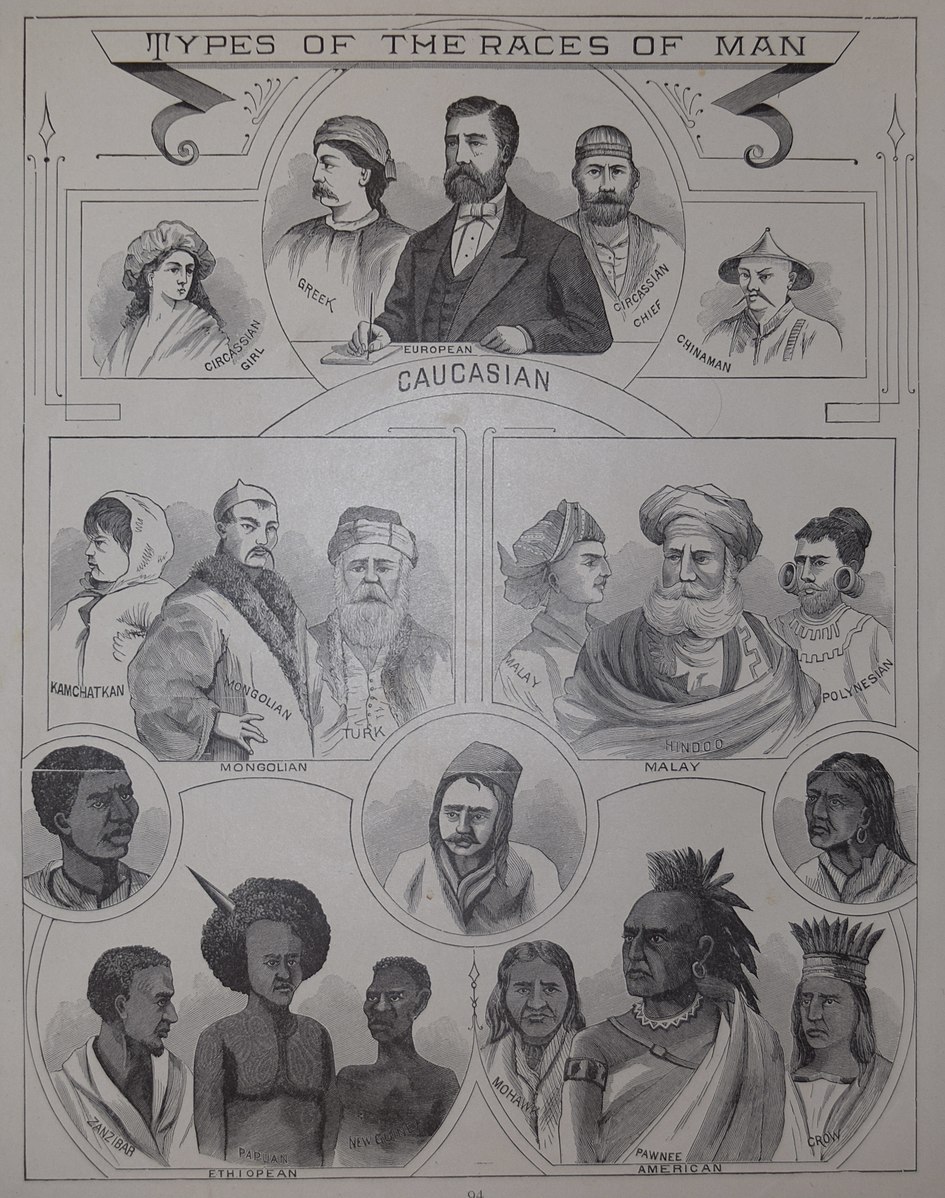
Bones were collected with the belief that studying them could answer all types of questions about the human body and race. At this time the common understanding was that race was biological. This meant that race was hereditary and fixed. People believed that race was reflected in physical and anatomical characteristics and personality traits. It was also common belief that races could be categorized into a hierarchy with some superior to others. This belief was often used to justify imperialism. This is now referred to as scientific racism. Today, race is understood to be a social construct. In other words, societies give the categories of race meaning based on socio-historical contexts. Race and racial categories are therefore malleable. Evidence of this can be seen in the changing treatment of the Irish in the continental U.S. and in the changing categorization of the Portuguese in Hawaiʻi’s census records.
As a result of this rush to collect bones it is believed that in 2016 upwards of 500,000 Native American remains were held in U.S. museums and another 500,000 thousand or so in European museums. U.S. museums also contained African American, European American, and other indigenous remains in smaller numbers. While these numbers are certainly high, scholars believe these are undercounts of the actual numbers of bones in museums. During the last three decades Native American and Native Hawaiian human remains, funerary objects, sacred objects,and objects of cultural patrimony have begun to be returned to their lineal descendants. This process has been facilitated by the Native American Graves Protection and Repatriation Act (NAGPRA) which was passed by Congress in 1990 in recognition that human remains “must at all times be treated with dignity and respect” and that “remains and other cultural items removed from Federal or trivial lands, belong in the first instance, to lineal descendants, Indian Tribes, and Native Hawaiian Organizations” (NPS 2019). NAGPRA is implemented by the National Park Service and applies to any institution that receives federal funds.
While much progress has been made regarding repatriation of bones and cultural items, as of 2021 more than 116,000 Native American remains and countless goods were still in U.S. institutions, most of them with unclear provenance. In other words, the institutions have claimed they are unable to determine which tribes are lineal descendents of remains and cultural goods. In 2021 Deb Haaland, the Secretary of the Interior Department, announced the Biden administration’s intent to streamline the repatriation process and eliminate loopholes that would enable institutions to hold onto remains and cultural items. The National Park Service posted proposed changes, and Native American tribes and Native Hawaiian community members were invited to provide comments. As of 2022 the NPS has “hired a full-time civil penalties investigator whose sole purpose would be to manage oversight and museum compliance with NAGPRA” (Kolb 2022).
Issues related to the repatriation of human remains and cultural items are not limited to the United States. In February 2022, 58 sets of Native Hawaiian remains were repatriated from institutions in Austria and Germany. This repatriation was instigated by the Office of Hawaiian Affairs and was the culmination of 5 years of provenance research and work. Included in the 58 sets of remains were 23 skulls which most likely were collected by German naturalist Otto Finsch in Waimānalo in the 1880s. Finsch happened upon a burial ground, collected skulls, and sent them back to Europe for study. Once in Europe they were put into storage. During a press conference after one of the repatriation ceremonies, Edward Ayau, a member of the Native Hawaiian Delegation, emphasized the “importance of consent when considering the ethics of colonial collectors.[He stated] ʻIf they went to someone and they said, ‘Can I take your grandma’s head? I need to do these studies,’ and if that family said yes, then we wouldn’t be here…But no Hawaiian family ever said yes. Because they were Egyptians lived under centralized hereditary rule with power held by the pharaoh. Similarly to the Mesopotamian city-states, social stratification developed in Egypt with individuals filling a number of bureaucratic, religious, and artistic roles in society. The innovations of Egyptians, such as their stone-carving techniques, hieroglyphics, the use of papyrus, their knowledge of the length of a solar year, and their construction methods, influenced the ancient world and still inspire awe.never asked..’” (Gannon 2022).
STUDYING AFRICAN HISTORY
Environmental Influences
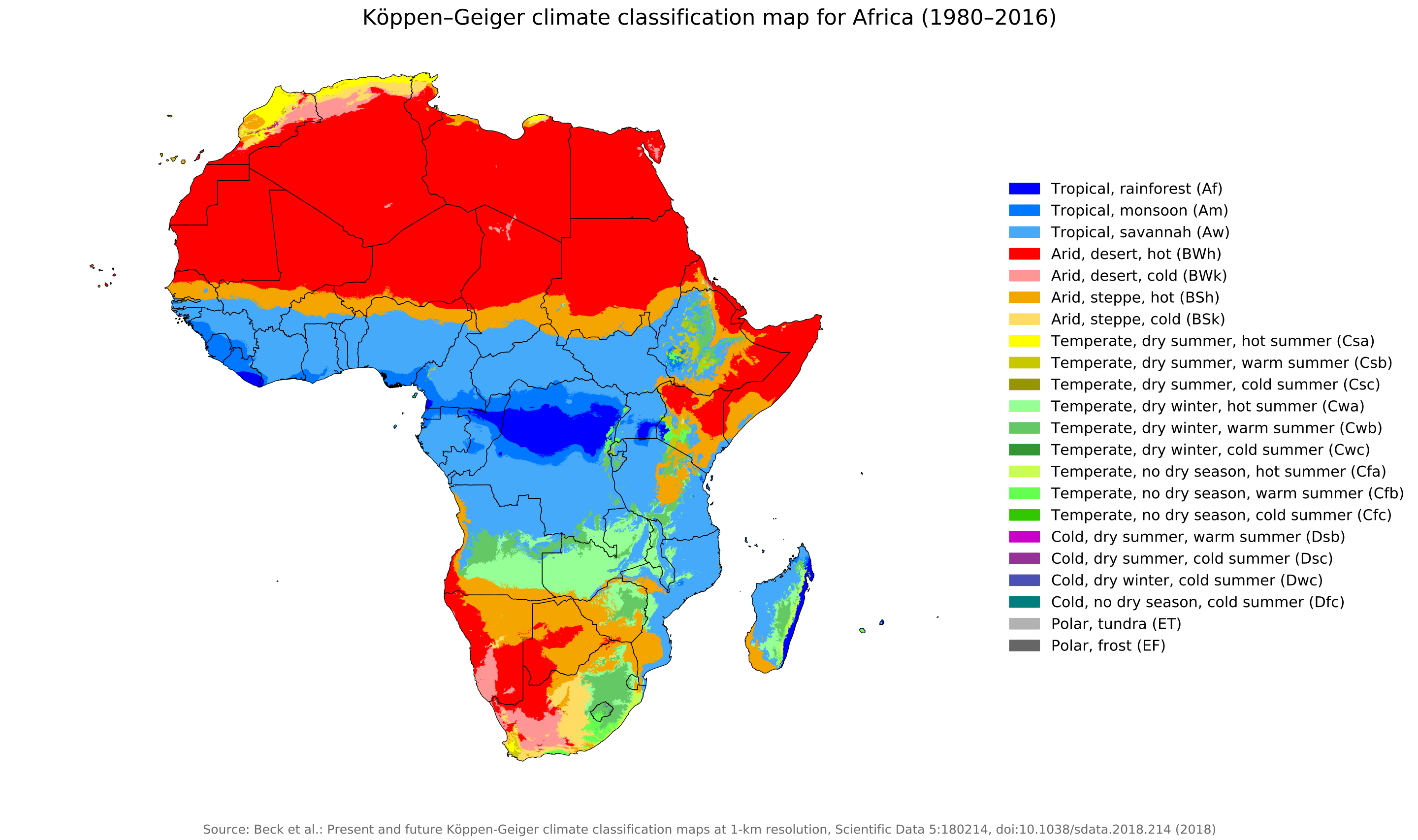
A critical starting point in understanding the history of African peoples is the prominent role of environmental factors. Africa is the second largest continent in the world, home to over 50 independent countries and more than a billion people. This vast region includes diverse environments that include savannahs, rainforests, deserts, glaciers and snow-capped mountains. African inhabitants speak over 1,000 languages (about one-third of the world’s languages), testament to the continent’s diversity (“African Languages n.d.”).
Africans have experienced, and continue to face, significant environmental challenges such as diseases, low soil fertility, and unpredictable rainfall, factors which have significantly impacted population growth, settlement patterns and lifestyles. Africans have had to continuously adapt herding and farming techniques in response. In many regions, African soils are poor and rainfall is unpredictable, conditions now exacerbated by climate change. Soils have limited fertility due in part to the geologic age of the continent, the oldest inhabited on Earth. Rainfall tends to be concentrated to just two or three months a year, making farming difficult. Myriad diseases remain chronic, significantly challenging African populations and economies. Over the past 5,000 years of African history, malaria, yellow fever, and trypanosomiasis (sleeping sickness) have had the biggest impact on population levels and settlement patterns; these diseases continue to significantly affect developments on the continent. In 2020, 95% of global cases and 96% of all malarial deaths occurred in Africa, with children accounting for most fatalities. Malaria and yellow fever historically have had the largest toll on human populations, while sleeping sickness most dramatically impacts the livestock on which so many societies depend.
Writing the History of Ancient and Medieval Africa
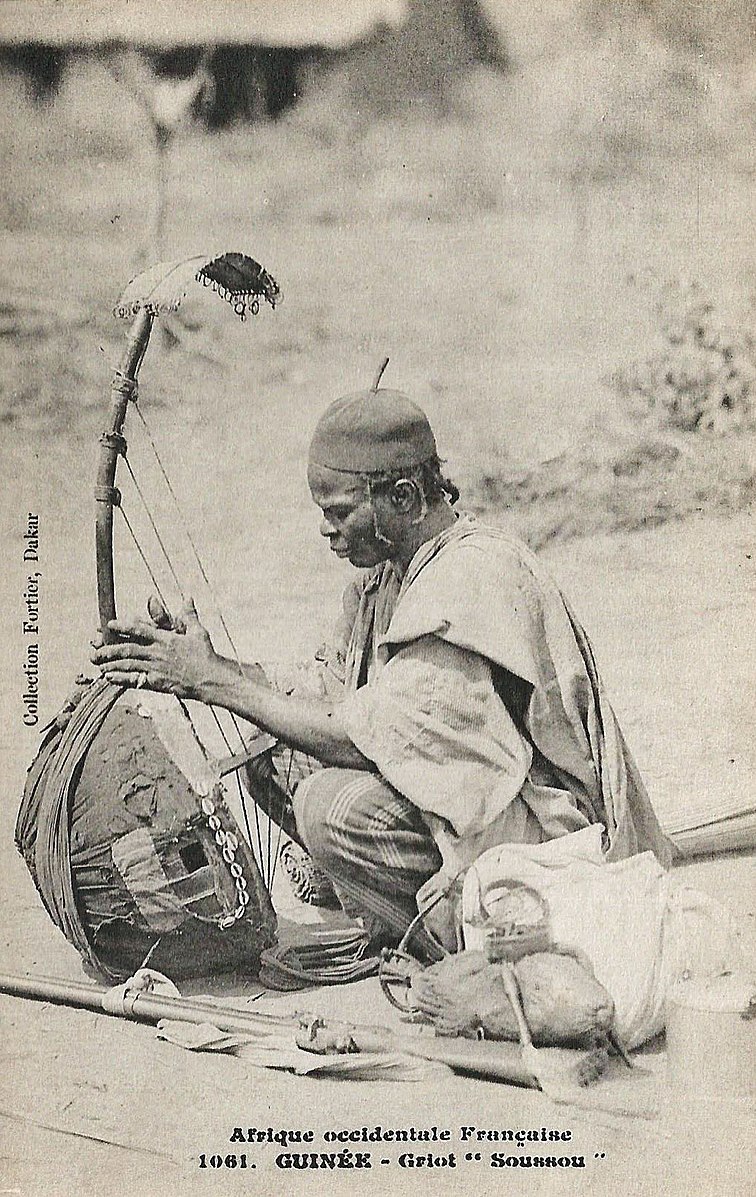
The limited availability of written primary sources recorded by ancient Africans means scholars must rely on a wide range of alternative resources to trace the history of African societies. Prior to the 19th century CE, many African societies maintained records orally rather than in written form. The histories of rich, complex African societies were thus often overlooked or ignored by past scholars focused on written documentation. 19th century scholars tended to portray Africans as primitive and static. Africa was commonly referred to as “the dark continent” and viewed as lacking a meaningful history prior to European arrival on the continent. Urban developments or complex state structures in Africa were sometimes believed to be achievements of other cultures, for example the creation of the Axum trading empire was attributed to Yemeni influences, and archaeological findings at Great Zimbabwe were credited to the Phoenicians. In recent decades, efforts to reclaim African history have led to a more accurate understanding of experiences and accomplishments. Scholars now rely on numerous methodologies, including archaeology, climate science, linguistics, and paleoarchaeobotany (the study of ancient plant materials). Compiling information from numerous sources has produced a deeper and more multi-faceted understanding of the African past.
Perhaps the most contested, and potentially most revealing, materials are oral resources. Many ancient African societies relied on those tasked with orally transmitting official histories and traditions, such as the griots in West Africa who memorized chronologies, cultural traditions, and legal precedence. These memorized records were used to advise kings and state leaders. Griots also traveled and performed theater and praise-songs, spreading cultural values, sharing historical tales, and communicating governmental news. Griots held honored places in their societies, reflecting their importance. African communities honored older generations for their knowledge of the past, prompting Amadou Hampate Ba, a famous author from Mali, to write, “In Africa, when an old man dies, it’s a library burning” (Badkhen 2015, 20). Since the 1960s, scholars of African history have worked to integrate knowledge from these oral sources. While challenging, work to include these resources has broadened scholarly understanding of African societies.
Terminology
Due to the paucity of written records and prejudices of past Western scholars, much of our understanding of African societies and history filtered into popular images is inaccurate. Popular media often depicts Africans as living in a rural landscape dominated by wild animals, in a continent made up largely of rural villages, isolated from and lagging behind the rest of the modern world. But these images do not accurately represent the continent, either in the past or present. By 2015, one-half of Africa’s population were living in cities, with that percentage even higher in areas such as Egypt where 93% of the population resided in urban centers. African history is full of examples of ancient great cities, such as the famed cities of Mombassa, Kilwa and Timbuktu. These great cities, past and present, depended on vibrant trade links that connected Africa to the Arabian Peninsula, Asia, and Europe – for millennia.
Adding to misconceptions is language usage that perpetuates false assumptions, for example the potentially problematic use of “tribe.” As African historian Christopher Ehret points out, use of the term tribe in reference to Africans often carries the implication tribal peoples are exotic, wild, backwards, and potentially dangerous. Ehret asks us to consider, for example, why African wars are often referred to as tribal wars instead of civil wars, and:
“Why is Shaka, the famous nineteenth-century ruler, called the king of the Zulu “tribe” when he was actually the king of a centralized and military powerful state? Why are Africans in “traditional” dress said to be engaging in “tribal” dancing, when Europeans garbed similarly in the clothes of an earlier time are said to be performing “folk” dances?” (Ehret 2002, 7).
Ehret makes the case that the way tribe was frequently used perpetuated negative stereotypes of Africa in European accounts. Dismissing Africans as tribal allowed Europeans to legitimize the centuries-long trans-Atlantic slave trade that began in the 15th century, as well as justifying 19th century colonization of the continent. Many historians point to the more fluid, adaptive, and/or inclusive ethnic identities of Africans and suggest 19th century colonizing Europeans reinforced divisions, emphasizing tribal affiliations to suit their own administrative purposes. Today, references to tribes, and tribal interests and conflicts prevent more accurate understanding of the complexities of African politics and social organization.
Other terms modern scholars use to scrutinize also evoke similar prejudices, for example, the phrase “stateless society”. Many European written sources from the 19th century did not recognize the existence of African states based on more democratic, less centralized, and less hierarchical leadership structures. Assuming all states had kings or other centralized leaders, some Western scholars denied or failed to acknowledge states organized in alternative ways. Some African societies were centralized under the rule of monarchs, while others relied on councils of elders or other social groupings to structure societies, mobilize labor and manage government affairs. 19th century Europeans usually did not recognize these alternative forms of state organization which buttressed their claims that Africans were incapable of ruling themselves without European intervention. Referring to “stateless societies” was one way Europeans could claim to be more advanced, legitimizing colonization of Africa in the 19th century.
Africa has in fact been a continent of innovation and change since the first behaviorally modern humans emerged there between 200,000 and 100,000 years ago. Africans were some of the first farmers and iron-workers in history. Africans developed numerous, distinctive artistic traditions, social patterns, religious beliefs and unique societal structures. With such a diverse continent to consider, this chapter focuses on major, influential civilizations of larger scale and greater complexity, examining important achievements and Africa’s participation in international trade links, as well as conveying some of the major changes and challenges impacting the continent.

NORTH AFRICAN STATES AND KINGDOMS
Nubia: The Kingdoms of Kerma and Kush
Ancient Nubia, also referred to as Kush or Meroe, was centered south of Aswan, at the first cataract of the Nile River. The emerging kingdoms of Kerma (c. 2400 BCE to 1500 BCE) and Kush (c. 1000 BCE to 300 CE), located along the Nile River, prospered due to the region’s productive agriculture and copious natural resources. Nubians borrowed heavily from the Egyptians yet retained distinctive practices setting their civilization apart from their northern neighbors, including their religious and cultural traditions and the written script of Meroitic. At certain points, both Kerma and Kush were powerful enough to successfully invade Egypt.
Scholars link the origins of ancient Kerma (in present-day Sudan) to changes in the Sahara Desert and the rise of dynastic Egypt. Rock paintings of cattle in areas that have been desert for thousands of years attest to the significant environmental changes that have taken place in Nubia. As the region dried out, between 5,000 and 4,000 BCE, people moved closer to the Nile River, bringing their cattle, agricultural traditions, and languages, creating settlements with higher population densities. Egyptian elites desired ivory, animal skins, incense, and other luxury goods, prompting trade between Nubia and Egypt. Increased demand for luxury goods led to Egyptian military forays into Nubia; Egyptians also invaded Nubia to raid for slaves and cattle. Lack of Nubian records from the 3rd millennium BCE makes it difficult to identify specific reasons why the state arose but likely Nubian desires to control trade and to protect themselves from Egyptian raids contributed to the formation of a powerful state. Archeological evidence indicates that by about 2400 BCE, Nubians had formed the Kingdom of Kerma between the third and fourth cataracts of the Nile River.
Kerma (c. 2400 BCE to c. 1500 BCE)
The kingdom is named after the capital city at Kerma, located at the Nile’s third cataract. Excavations at other sites suggest that at its height, Kerma’s state reach may have extended more than 200 miles southward. Archaeological evidence indicates that, with the exception of the capital and a few other cities, most people in Kerma lived in smaller villages. Kerma endured in Upper Nubia for almost a thousand years. Residents grew crops like barley, and kept goats, sheep, and cattle, sending tribute to the capital. The people of Kerma also developed small-scale industries in mining, metalworking, and pottery. Kerma was linked through trade to its tributary villages as well as dynastic Egypt and other communities in sub-Saharan Africa which desired the gold, copper, slaves, ivory, exotic animals and other goods that Kerma had to offer. Presumably, Nubian leaders built their ancient capital at Kerma in part to oversee lucrative river trade. This location gave the leaders at Kerma the chance to tax, divert, and register goods transported between Kerma and Egypt.
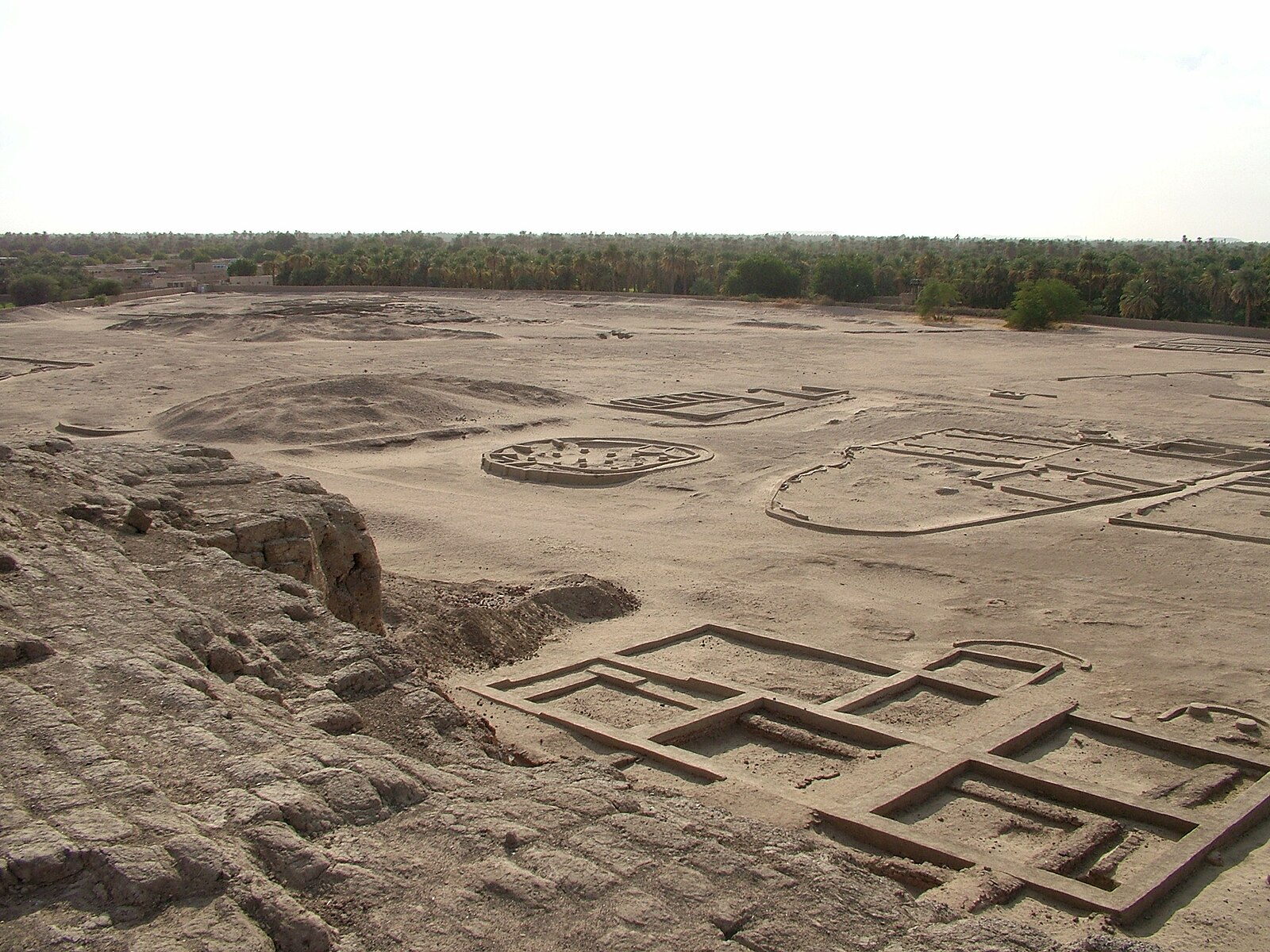
Archaeology has revealed capital defenses that included ditches, ramparts, and massive walls with towers. There were palaces within the city and on its outskirts. The most famous structure is the Western Deffufa, made of mud-bricks, which likely served as a temple. Two other deffufa, large mud-brick structures with spaces for rituals on top, have been partially excavated within the vicinity of Kerma. Another notable archaeological find is the Eastern Cemetery, which lies a couple of miles to the east of the city. It served as the burial site for Kerma’s rulers for almost a thousand years and contains over 30,000 tombs, some covered with large mounds. Dozens of cattle skulls encircle a number of the tombs, reflecting the cattle culture of the region. Tombs contain remains of human sacrifices as well as symbols of wealth and status such as jewelry of gold and silver. The largest tomb found to date is 300 feet in diameter and covered with black granite, white quartz pebbles, and a marble top. Its interior burial suite contains semi-precious stones, bronze weapons, and lavish furniture. In the corridor leading into the underground burial site, archaeologists unearthed remains of horses, dogs, and about 400 human sacrificial victims. While they did sometimes employ Egyptian artisans to complete construction of these grand projects, the cattle skulls, mounds, and the remains of human sacrifices suggest the Kerma elite had established their own style of monumental structures. The practice of entombing bodies and wealth in massive monuments is thus also found south of Egypt, a tradition shared along the Nile River.
Kerma was strongest when neighboring Egypt was weak. For example, during Egypt’s Second Intermediate Period, Kerma was at the height of its power, successfully invading parts of Upper Egypt and establishing diplomatic relations with the occupying Hyksos. Once reunified during the New Kingdom, Egypt retaliated by pushing south to the fourth cataract, occupying Kerma for the next 500 years. During the Egyptian occupation, the elite classes of Kerma adopted many elements of Egyptian culture including Egyptian gods, styles of dress, hieroglyphics, and the Egyptian language. Yet scholars believe the Nubian masses retained their own distinctive identity, including their local language and customs.
The Kingdom of Kush
As Egypt entered its Third Intermediate Period, Nubians gradually established their independence, creating the Kingdom of Kush in the 8th century BCE. The initial capital of the Kingdom of Kush was Napata (c. 750 BCE to 593 BCE). The Nubians took control of Upper Egypt, establishing the ‘Ethiopian Dynasty’ which ruled from Thebes for 60 years. Assyrian invasions destabilized Nubian rulers in Thebes, causing the last pharaoh of the Ethiopian Dynasty to flee to Napata. The Egyptian army sacked Napata in 593 BCE and in response, Nubian rulers moved their capital farther south to Meroe.
With the new capital at Meroe, a location with well-watered farmland some distance away from Egypt, the Kingdom of Kush flourished, lasting until the 4th century CE. Meroe received more rainfall than Napata and was not as dependent on Nile floods. Nubians extended areas under cultivation, growing a wider variety of crops including cotton, sorghum, and millet. Better grazing meant cattle became even more important as a symbol of their culture and wealth during this period.
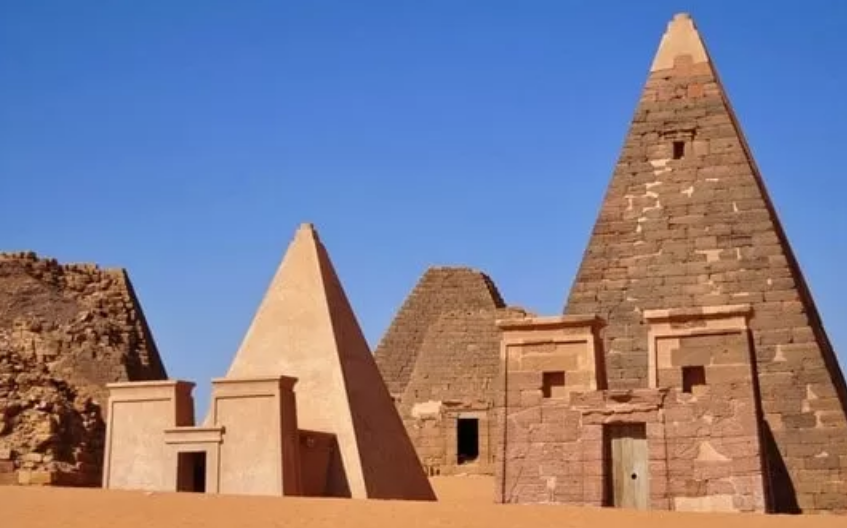
After moving the capital to Meroe, the people of Kush displayed greater independence from Egypt, emphasizing their own deities and relegating Egyptian gods to the background. Gold had long been mined in the region and remained important even as the people of Kush developed additional industries. The area was rich in iron ore and hardwoods used to make charcoal, enabling the growth of a booming iron industry. They made iron weapons and tools for military defense and increased crop yields. Ancient Nubians transported agricultural surpluses, iron, cattle, and exotic animals from sub-Saharan Africa to Egypt, Greece, Rome, and India, bringing great wealth and prestige to Meroe. The enriched rulers of Meroe also commissioned pyramids. These Meroe pyramids were smaller and distinct from Egyptian pyramids. Kush burial practices also differed from those used in dynastic Egypt, for example corpses were buried in the fetal position and not always mummified.
Learning in Action – Virtual Tour of Meroe Pyramids
Watch the video: “Explore Sudan’s Pyramids of Meroe”, Google Arts and Culture.
The Meroitic written script replaced the use of Egyptian Hieroglyphics by 300 BCE. Modern scholars have not yet translated Meroitic; we will surely learn even more about the Kingdom of Kush once scholars have deciphered this language. At present, we know of distinct elements of the Kush civilization from physical evidence including indications of its productive agriculture, local rituals and burial practices, growth of industries, social stratification, and extensive trade networks.
There are also insights gained from outside sources. Greeks and Romans occasionally sent raiding parties into Nubia, though Meroe’s southern location provided some protection from conquest for a long period. Egyptian sources were generally very derogatory in their portrayal of Nubians, leading a few early 20th century archaeologists to carelessly (and incorrectly) identify Nubian kingdoms as slave colonies of the Egyptians. In fact, the kingdoms of Kerma and Kush were renowned in the ancient world for their wealth and industries. Wealth garnered through productive agriculture and trade supported a ruling class, prolific artists, and monumental architecture. Egyptian culture was influential, but Nubians adapted Egyptian practices to meet their own needs and sensibilities. Though often entangled with Egypt, and sometimes defending themselves from other invaders, Nubian kingdoms persisted for hundreds of years as an independent civilization along the southern stretches of the Nile River. Environmental changes, internal rivalries, and the rise of Axum (a new state to the East) contributed to the fairly abrupt collapse of Meroe in the 4th century CE.
Learning in Action – Relics from Kingdom of Kush and Ancient Nubia
View: “Image Gallery: World History Encyclopedia”, Patrick Goodman 2021.
Look at the image gallery of relics and read the descriptions.
Aksum and Ethiopia
Aksum was located in the region that is today home to the countries of Ethiopia, Eritrea, and parts of Sudan. This kingdom was at its most powerful between the 4th and 6th centuries CE. Aksum was a great trading empire, with its own coinage, language, and distinctive Christian faith; at its height, its influence extended beyond Africa into parts of the southern Arabian Peninsula. Climatic variation throughout Ethiopia encouraged agricultural diversification and trade which sustained large populations in the region. Innovative cultivation included crops such as teff (a grass) and nsete (“false banana”), used to make bread and porridge. Ethiopians also are credited with the discovery and the first production of coffee.
The Kebra Nagast (“The Glory of Kings”), is a 700 year old text sacred to Ethiopian Christians and Rastafarians and traces the origins of the Ethiopian royal family to the Queen of Sheba (known locally as Queen Mekeda) and King Solomon of Jerusalem. According to the Kebra Nagast, early Ethiopian rulers were descendants of King Solomon through Menelik I. A 13th century Ethiopian king, Yekuno Amlak (r. 1270 – 1285 CE) traced his origins back to King Solomon and Queen Mekeda, founding the Solomonic Dynasty which ruled Ethiopia from 1270 to 1769 CE. Members of Ethiopia’s royal family continued to claim descent from King Solomon until the last Ethiopian emperor, Haile Selassie, was overthrown in 1974. The proclaimed royal link going back to King Solomon and Queen Mekeda is a critical part of Ethiopian religious beliefs and legitimized claims to political power for generations of rulers.
The Kingdom of Da’amat was the first to emerge in northern Ethiopia in about the 10th century BCE. Archeological finds show that by the 7th century BCE, ivory, tortoiseshell, rhino horn, gold, silver, and slaves were brought from interior regions of Africa and traded through Da’amat for imported cloth, tools, metals, and jewelry. Inscriptions, imagery, architectural styles, and even overlaps in historical traditions, such as those associated with the Queen of Sheba, suggest close connections between the Kingdom of Da’amat and Saba (Yemen) in Southern Arabia.

The Kingdom of Da’amat was weakened in the 4th century BCE as Red Sea-based trade challenged the dominance of northern overland routes. Da’amat gave way to the state of Aksum, with its important cities of Adulis and Aksum. Adulis, positioned on the coast, rose in prominence and grew wealthy as a safe harbor for ships traveling from Southeast Asia. The growing capital city in the interior, Aksum, was a stopover point for land-based trade routes to the Sudan and Sub-Saharan Africa. Ivory, slaves, tools, spices, gold, silver jewelry, copper, and iron were traded through the capital city of Aksum, and directed to the coast. The state of Aksum began minting its own gold and silver coins in the 3rd century CE, demonstrating the importance of this long-distance trade.
In addition to trade, Aksum was also known for its inhabitants’ early conversion to Christianity. Ethiopian tradition traces the establishment of Christianity in the region to two shipwrecked Syrians, one of whom became the first bishop of Ethiopia in 303 CE and guided the king of Aksum, King Ezana (r. 325 – 350 CE), in his conversion to Christianity. Christian merchants were encouraged to settle in Aksum and Christianity in Ethiopia grew further as the state offered refuge to Christians fleeing persecution due to doctrinal disputes. Nine priests, breaking with the Church in Jerusalem, settled in Ethiopia and founded the Ethiopian Orthodox Church. They maintained ties with the Coptic Church in Egypt and developed a distinct liturgy using Ge’ez, the local language. Members of the Ethiopian Orthodox Church also incorporated local beliefs, such as the legendary connection to King Solomon, into their religious traditions.
The ruling family, coastal elites, and military leaders amassed significant wealth during the height of Aksumite power. Aksumite kings gained wealth by collecting tribute from surrounding states and taxing trade. Aksum and its surrounding states were agriculturally productive with fertile soils and effective irrigation systems. Building a powerful military, King Ezana expanded the empire and claimed control over most of Ethiopia, Nubia, and Saba (Yemen), showcasing his power with “conquest stones” that commemorated his victories and proclaimed God had ordained his reign. One section reads:
[…] The Lord of Heaven strengthens my dominion! And as he now has conquered my enemy, (so)
May he conquer for me, where I (but) go! As he now has given me victory and has over- thrown my enemies.
(So will I rule) in right and justice, doing no wrong to the peoples. And I placed
The throne, which I have set up, and the Earth which bears it, in the protection of the Lord of Heaven, who has made me king…
(Brizuela-Garcia and Getz 2012, 33-36).

Ezana and other Aksumite kings commissioned construction of stelae (singular: stele), tall rectangular pillars with rounded tops that marked underground grave sites of Aksum’s royalty and elite. The most ornate stelae were elaborately carved into a marble-like material with faux doors at the bottom and multiple stories indicated by windows etched into each level. They have been described as “ancient skyscrapers”; the largest is 108 feet tall. Most stelae have fallen in the over 1700 years since their construction, but several remain standing. One stelae caused international uproar when the Italians took it during their occupation of Ethiopia at the onset of the Second World War and only recently returned it at great expense.
Stelae demonstrated the wealth of Aksum’s ruling classes and links between ruling generations. Though graves marked by stelae were raided by tomb robbers in the intervening years, small remnants of glass, pottery, furniture, beads, bangles, earrings, ivory carvings, and objects gilded in gold attest to the wealth buried with ancient affluent Aksumites. These artifacts also show the availability of traded goods brought from long distances.
Learning in Action – The Aksum Kingdom
Watch the video: “The Aksum Kingdom: Trade and Ancient Africa – Africa’s Great Civilizations”, PBS LearningMedia
Works Cited and Other Readings
Ancient Egypt Sources
- Australian Museum. “The Underworld and the Afterlife in Ancient Egypt.” (Australian Museum, 2015) http://australianmuseum.net.au/the-underworld-and-the-afterlife-in-ancient-egypt
- David, Rosalie. The Pyramid Builders of Ancient Egypt: A Modern Investigation of Pharaoh’s Workforce. New York: Routledge, 1997.
- Dollinger, Andre. “Slavery in Ancient Egypt.” (February 2011) http://www.reshafim.org.il/ad/egypt/ timelines/topics/slavery.htm
- Hierakonoplis Expedition, Hierakpopolis-online. http://www.hierakonpolis-online.org/
- Johnson, Janet. “Women’s Legal Rights in Ancient Egypt.” Fathom Archive, Digital Collections. University of Chicago Library: 2002. http://fathom.lib.uchicago.edu/1/777777190170/
- McDowell, A.G. Village Life in Ancient Egypt: Laundry Lists and Love Songs. Oxford: Oxford University Press, 1999.
- Pinch, Geraldine. Egyptian Mythology: A Guide to the Gods, Goddesses, and Traditions of Ancient Egypt. Oxford: Oxford University Press, 2004.
- Shaw, Ian. The Oxford History of Ancient Egypt. Oxford: Oxford University Press, 2004.
- Shillington, Kevin. History of Africa. 2nd e. Oxford: Macmillan Education, 2005.
- Smith, Jeffrey. “The Narmer Palette,” Yale 2013 PIER Summer Institutes, http://www.yale.edu/macmillan/ pier/classroom-resources/The%20Narmer%20Palette%20-%20by%20Jeff%20Smith%20.pdf
- Teeter, Emily. Religion and Ritual in Ancient Egypt. Cambridge: Cambridge University Press, 2011.
- Tyldesley, Joyce. Daughters of Isis:Women in Ancient Egypt. New York: Penguin History, 1995.
Ancient Nubia Sources
- Afolayan, Funso. “Civilizations of the Upper Nile and North Africa.” In Africa, Volume 1: African History Before 1885. Toyin Falola (ed.) (73-108) Durham, North Carolina: Carolina Academic Press, 2000.
- British Museum. “The Wealth of Africa: The Kingdom of Kush.” Student Worksheets. www.britishmuseum.org
- Louis, Chaix; Dubosson, Jerome; and Matthieu Honegger. “Bucrania from the Eastern Cemetery at Kerma (Sudan) and the Practice of Cattle Horn Deformation.” Studies in African Archaeology, 11. Poznan Archeological Museum, 2012. www.academia.edu
- Collins, Robert and James Burns. A History of Sub-Saharan Africa. Cambridge: Cambridge University Press, 2008.
- Ehret, Christopher. The Civilizations of Africa: A History to 1800. Charlottesville, VA: University Press of Virginia, 2002.
- Garlake, Peter. Early Art and Architecture of Africa. Oxford: Oxford University Press, 2002.
- Trigger, Bruce. “Kerma: The Rise of an African Civilization.” International Journal of African Historical Studies. Vol. 9, no. 1 (1976): 1-21.

